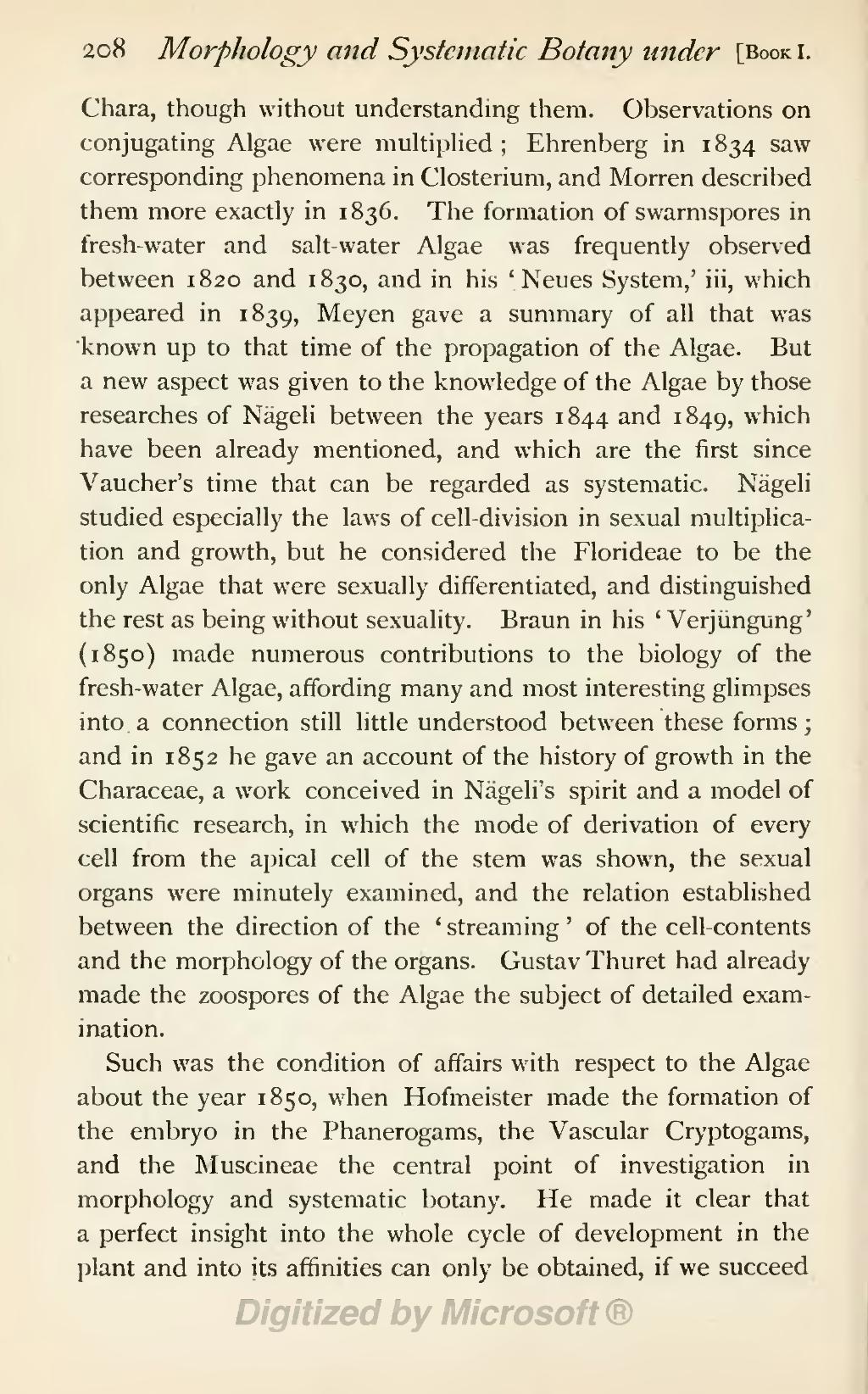Chara, though without understanding them. Observations on conjugating Algae were multiplied; Ehrenberg in 1834 saw corresponding phenomena in Closterium, and Morren described them more exactly in 1836. The formation of swarmspores in fresh-water and salt-water Algae was frequently observed between 1820 and 1830, and in his 'Neues System,' iii, which appeared in 1839, Meyen gave a summary of all that was known up to that time of the propagation of the Algae. But a new aspect was given to the knowledge of the Algae by those researches of Nägeli between the years 1844 and 1849, which have been already mentioned, and which are the first since Vaucher's time that can be regarded as systematic. Nägeli studied especially the laws of cell-division in sexual multiplication and growth, but he considered the Florideae to be the only Algae that were sexually differentiated, and distinguished the rest as being without sexuality. Braun in his 'Verjüngung' (1850) made numerous contributions to the biology of the fresh-water Algae, affording many and most interesting glimpses into a connection still little understood between these forms; and in 1852 he gave an account of the history of growth in the Characeae, a work conceived in Nägeli's spirit and a model of scientific research, in which the mode of derivation of every cell from the apical cell of the stem was shown, the sexual organs were minutely examined, and the relation established between the direction of the 'streaming' of the cell-contents and the morphology of the organs. Gustav Thuret had already made the zoospores of the Algae the subject of detailed examination. Such was the condition of affairs with respect to the Algae about the year 1850, when Hofmeister made the formation of the embryo in the Phanerogams, the Vascular Cryptogams, and the Muscineae the central point of investigation in morphology and systematic botany. He made it clear that a perfect insight into the whole cycle of development in the plant and into its affinities can only be obtained, if we succeed
Page:History of botany (Sachs; Garnsey).djvu/228
208
Morphology and Systematic Botany under
[Book I.
